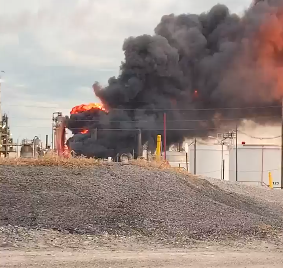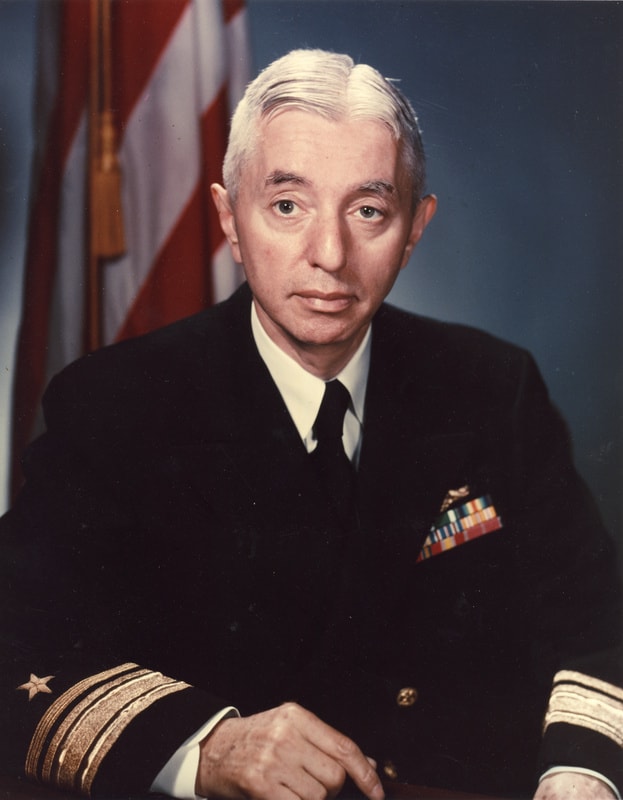2 Dead – Another Example of Non-Conservative Decision-Making at a Refinery

What is a Non-Conservative Decision?
Conservative Decision-Making (as opposed to non-conservative decision-making) was probably best defined in the Nuclear Navy. Admiral Rickover called it “Facing the Facts.”

He said that Facing the Facts (Conservative Decision-Making) was:
“To resist the human inclination to hope that things will
work out, despite evidence or suspicions to the contrary.”
And he said:
“If conditions require it, you must face the facts and brutally make needed changes
despite significant costs and schedule delays. … The person in charge must
personally set the example in this area and require his subordinates to do likewise.“
And that’s what Admiral Rickover did (see examples HERE).
This philosophy was carried over to the commercial nuclear power industry by the Institute of Nuclear Power Operations (INPO) after the accident at Three Mile Island. INPO defined conservative decision-making as:
Reaching conclusions by placing greater value on reactor safety above
the production goals of the station — decisions demonstrate recognition and
avoidance of activities that unnecessarily reduce nuclear safety margins.
INPO specified the following factors for conservative decision-making:
- Recognize conditions that could challenge safety and reliability.
- Place plant structures, systems, and components in a known safe condition when uncertain.
- Seek prompt assistance from persons with relevant expertise.
- Avoid hasty decisions and hurried actions.
- Assign roles and responsibilities.
- Explore and evaluate alternatives rigorously, asking challenging questions to confirm technical assumptions.
- Understand the potential consequences to safety and reliability of various alternatives.
- Adopt a deliberate and carefully controlled approach.
- Make a deliberate decision, providing clear direction, roles and responsibilities, contingencies, and abort criteria.
- Do not proceed in the face of uncertainty.
So, a non-conservative decision is taking shortcuts or underbudgeting for safety and operational excellence and hoping for the best. Or making a hasty decision while the system is in an upset state without adequate evaluation and consideration of alternatives and with an incomplete understanding of the roles and responsibilities or the consequences.
What does non-conservative decision-making have to do with process safety and a refinery fire that took two lives? Read on to find out.
Two Killed at the BP Refinery
Brothers Ben and Max Morrissey didn’t come home safely from work. They died within 15 minutes of each other the next morning at a hospital from burns from a fire at the BP Refinery in Oregon, Ohio.
Perhaps the best summation so far of what happened the day of the fire at the BP Refinery (operated by BP at the time but owned by Cenovus Energy, who had just completed a buyout at the site but had not taken control) is in a Wall Street Journal article. You should read the article for information about the accident before proceeding. CLICK HERE to access the article.
Here is a news report about a preliminary update on the Chemical Safety Board investigation that outlines the sequence of events that day…
A year after the fire, the CSB has not yet released a final report.
Since the fire and a six-month OSHA investigation, OSHA proposed $156,000 in fines, as explained in this WTOL report…
This isn’t the first major OSHA fine at this site since BP bought the refinery as part of its merger with Amoco. The refinery was fined $3.04 million after an inspection in 2009 (which was later settled for $2.6 million).
Of course, the largest proposed OSHA fine for a BP refinery was the $87 million fine after the explosion at the BP Texas City refinery in 2005. Below is the CSB video that details that accident…
The fine was a minor cost of the overall expenses of the BP Texas City accident that took 15 lives and injured 180 others.
Non-Conservative Decisions
According to The Wallstreet Journal article, during the process upsets that were occurring the evening of the accident, a relatively inexperienced control room operator became concerned that he couldn’t control the crude unit and requested permission to shut the unit down. However, according to the article, two supervisors encouraged him to try to regain control. He later, without permission, started the crude unit shutdown without permission. But this was too late to avoid the fire that took two lives.
What would you say? Were the supervisors’ instructions to continue operating the crude unit “conservative decisions?”
My guess is that many non-conservative decisions were made before this critical point in the accident. Perhaps we will hear about the non-conservative decisions that led to this accident when the CSB finally releases its report. This could include:
- A pressure relief valve (PSV-1457) design,
- Training and assignment of operators,
- Overtime for workers,
- The decision to troubleshoot the pressure relief valve problems without shutting down the unit which then led to a major leak and bypassing of another unit that then contributed to the later crude unit and mix drum problems and
- The decision to drain the Mix Drum.
But these are only a sample of the non-conservative decisions that probably will be uncovered by the detailed CSB investigation. Cost-cutting, staffing cuts, and maintenance scheduling non-conservative decisions made by more senior management may have contributed to the accident.
Save Lives – Learn to Make Conservative Decisions

Admiral Rickover’s advice to face the facts and “resist the human inclination to hope that things will work out” is a key part of the reasons that the Nuclear Navy has such a stellar record for nuclear/process safety. Learning about conservative decision-making should be on the mind of every refinery general manager/operations manager, as well as more senior oil industry executives.
But how can you learn more about conservative decision-making? We can help. It is one of the modules in the Stopping Human Error Course that we offer. Conservative decision-making is a key part of a facility’s efforts to improve safety and operations excellence and stop major accidents. You can sponsor one of these courses at your site (contact us HERE or call 865-539-2139 for a quote) or attend one of our public courses (CLICK HERE for upcoming dates and locations).
The conservative decision-making module in the Stopping Human Error Course includes an exercise based on a previous refinery accident that also included many non-conservative decisions. This can help people see how common non-conservative decisions are and the mindset you must adopt to make conservative decisions.
Stop Non-Conservative Decisions
Don’t be the next facility to have a major accident because of non-conservative decisions. Improve your process safety with the lessons learned from the Nuclear Navy and the Stopping Human Error Course. Learning to make conservative decisions is just one of the many best practices taught in the course that will help your company stop human errors and improve human reliability, safety, and process safety.
Get your course scheduled TODAY.

Mark Paradies, pictured above, served in Admiral Rickover’s Nuclear Navy, interviewed with the Admiral, and made difficult but necessary conservative decisions during his career. He is one of the instructors who teaches the Stopping Human Error Course and will be teaching the course being held on April 29-30 before the 2024 Global TapRooT® Summit (May 1-3) at the Horseshoe Bay Resort near Austin, Texas.
Make a conservative decision. Register for the course and the Summit, and SAVE $300 off the combined fee. Bring a team of three or more to the course and the Summit and save EVEN MORE (up to $800 per person). See the discounts available below…





CSB Update: https://www.csb.gov/assets/1/20/bp_husky_investigation_update.pdf?16928